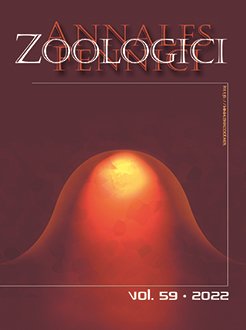We conducted a nonlethal feeding experiment to measure diet/hair and diet/faeces trophic discrimination factors (TDFs) in two rodent species fed two diet types. The mean TDFs between diet and hair (expressed as δ13C/δ15N) were 2.14‰/3.44‰ for C3 plant-based fodder and 2.65‰/3.25‰ for fodder with 30% animal (insect) matter in yellow-necked mice (Apodemus flavicollis) and 1.66‰/4.67‰ for C3 plant-based fodder and 1.94‰/4.49‰ for fodder with 30% animal (insect) matter in bank voles (Myodes glareolus). As compared with the diet, faeces were depleted in 13C by about 0.75‰ and enriched in 15N by about 2‰. All bank voles and only half of yellow-necked mice had regrown hair at the end of the study (day 95). We analysed archived skins of those species and confirmed, that moult in bank voles is more intensive. Our results can be used for trophic studies of temperate-forest rodents and for meta-analyses on trophic discrimination.
How to translate text using browser tools
25 April 2022
Diet/Hair and Diet/Faeces Trophic Discrimination Factors for Stable Carbon and Nitrogen Isotopes, and Hair Regrowth in the Yellow-Necked Mouse and Bank Vole
Piotr Chibowski,
Marcin Brzeziński,
Małgorzata Suska-Malawska,
Karol Zub
ACCESS THE FULL ARTICLE

Annales Zoologici Fennici
Vol. 59 • No. 1
January 2022
Vol. 59 • No. 1
January 2022




